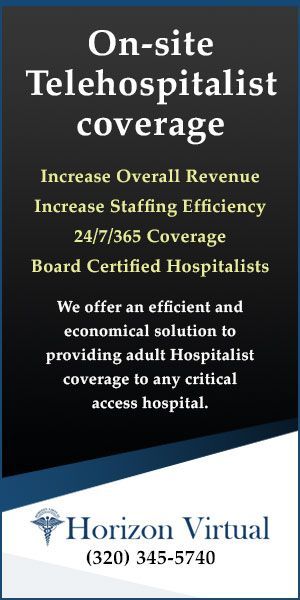Capsules
Medical Price Posting Now Mandated
Following on legislation that required Minnesota hospitals to post prices that went into effect last year, freestanding surgical centers, medical and dental clinics are now required to post prices. The posting format must comply with the standards outlined by the Centers for Medicare and Medicaid Services (CMS) and can be found at the CMS website. If the standard for the list is changed by CMS, medical and dental practices must update their lists to comply with the new standards by the date set by CMS. The following five data elements are required to be reported:
The charge for an individual item or service that is reflected on a medical or dental practice’s chargemaster, absent any discounts.
- The charge that a medical or dental practice has negotiated with a third-party payer for an item or service.
- The lowest charge that a medical or dental practice has negotiated with all third-party payers for an item or service.
- The highest charge that a medical or dental practice has negotiated with all third-party payers for an item or service.
The charge that applies to an individual who pays cash, or cash equivalent, for an item or service.
The statute requires that the price list must be posted for the public in the provider’s reception area of the clinic or office, updated annually, and made available on the provider’s website. It must also be submitted to the Minnesota Department of Health (MDH) but does not require MDH to put the data into specific uses. The statute, 62J.812 Primary Care Price Transparency, states that each provider shall maintain a list of the services over $25 that correspond with the provider’s 25 most frequently billed current procedural terminology (CPT) codes, including the provider’s 10 most commonly billed evaluation and management codes and of the 10 most frequently billed CPT codes for preventive services. If the provider is associated with a health care system, the health care system may develop the list of services required for the providers within the health care system. For each required service the provider shall disclose the provider’s charge, the average reimbursement rate received for the service from the provider’s commercial health plan payers and, if applicable, the Medicare allowable payment rate and the medical assistance fee-for-service payment rate. For additional information and FAQs please visit: www.health.state.mn.us/data/economics/docs/mdfaq.pdf
Mayo Clinic Launches Digital Pathology Platform
With the goal of accelerating advances in medicine, the Mayo Clinic has recently announced the formation of Mayo Clinic Digital Pathology, a platform to unlock the power of its extensive archive of digital slides. The new initiative uses de-identified clinical data and the resources of NVIDIA, a world leader in accelerated computing. In addition to improving the performance and scalability of generative AI in pathology, Mayo Clinic is collaborating with Aignostics, an industry leader in building artificial intelligence (AI) models for digital solutions in precision medicine. This collaborative, multidisciplinary effort leverages both medical and technological strengths, and the early achievements are promising. “Mayo Clinic is reimagining what is possible in disease detection and prediction, both within its own system and globally. We are doing this by using large, diverse datasets to build powerful artificial intelligence models in pathology. This will make diagnoses faster, more accurate, and more efficient, improving treatment approaches and speeding new cures to patients,” said Jim Rogers, CEO, Mayo Clinic Digital Pathology.
“AI-driven insights can accelerate diagnostics, enhance precision medicine and revolutionize patient care,” said Kimberly Powell, vice president of health care and life sciences, NVIDIA. “By digitizing and harnessing the power of vast datasets through its Digital Pathology platform, powered by NVIDIA’s accelerated computing, Mayo Clinic is helping pave the way for a future with faster medical breakthroughs, better treatments and improved outcomes for patients across the globe.”
The vast majority of pathology practices remain tethered to analog processes, hindering access to critical diagnostic data that could be used to expand diagnostics and treatments and speed the development of new therapies to benefit patients. To address this challenge, Mayo Clinic has moved quickly, investing in digitizing its pathology practice and by scanning its extensive archive of pathology slides, as well as prospectively scanning pathology slides from current patients. To date, Mayo Clinic Digital Pathology has leveraged 20 million digital slide images linked to 10 million patient records that incorporate treatments, medications, imaging, clinical notes, genomic data and more.
Herself Health Opens New Clinic in Eagan
Herself Health recently announced the opening of its fifth clinic in the Twin Cities area at a new Eagan location. As a value-based primary care practice for women over age 65, Herself Health is bringing its unique approach to health care and community-building efforts to thousands more women through this new clinic. Herself Health prioritizes placing the patient at the center of their care journey through female-focused, age-conscious care, longer appointment times and additional support. With its opening, this new clinic will create around 10 new jobs and serve over 2,000 patients. Herself Health was established in response to the unique challenges older women face within the U.S. health care system. Studies have repeatedly shown that women, particularly those over 65, are more likely to be misdiagnosed or dismissed, especially when it comes to conditions like heart disease and autoimmune disorders. Many older women report feeling invalidated by health care professionals, often being told that their symptoms are merely a consequence of aging. The company goes beyond traditional primary care and assesses the entire health and wellness profile of its patients, including mental, sexual and spiritual health, social wellness, quality of life and understanding what’s important to her. Recognizing the importance of social support, Herself Health also fosters community among its patients, who may experience isolation due to factors like bereavement or disability, offering social programs such as book clubs, TED talks and virtual meditations to encourage connection and engagement. The new location, at 2000 Rahncliff Road, combined three existing tenant spaces into one new 4,367-square-foot space designed to provide clinical care. Architectural services were provided by E4H, a firm with 12 locations nationwide specializing in health care projects. The Bainey Group, located in Plymouth, Minnesota, provided the general contracting services. The total cost of the project was around $1.2 million. Response to Herself Health has been outstanding with all five locations opening in just under two years and clear demand for further expansion.
New Law Limits Patient Co-Pays for Chronic Condition Medications
Among numerous new state laws taking effect with the start of the new year, health plans are now required to cap co-pays at $25 per month for prescription drugs used to treat chronic diseases. These conditions include such common conditions as diabetes, asthma and allergies requiring the use of epinephrine auto-injectors. The new law also places a $50 monthly cap on related medical supplies such as syringes, insulin pens and pumps, test strips, glucometers, continuous glucose monitors, epinephrine auto-injectors and asthma inhalers. The patient payment for these medical supplies will not increase with the number of chronic diseases for which an enrollee is treated and coverage shall not be subject to a deductible. These new co-pay limits are part of the 2023 commerce finance and policy law sponsored by Rep. Zack Stephenson (DFL-Coon Rapids) and Sen. Matt Klein (DFL-Mendota Heights). “No one should break the bank to cover the cost of medication they need to survive and thrive,” said Minnesota Rep. Mike Howard (DFL-Richfield), who was the chief author of the bill. “Our new law will make these life-saving medications, and the supplies that accompany them, more affordable for Minnesotans. This is the latest step our state has taken to put patients over profits, but it cannot be the last.” The price charges for medications treating chronic illness has inexplicably soared over the past few years. More than 500,000 Minnesotans have been diagnosed with asthma and around 390,000 Minnesotans have either Type 1 or Type 2 Diabetes. “It’s worth checking with your insurer to understand what kind of plan and what kind of coverage you have,” said Rep. Howard. “We’ll be saving close to $2,000,” said one Minnesotan, noting she spends about $2,500 a year on her daughter’s diabetes medications and supplies. “Next year, I anticipate we won’t spend any more than $600, and we probably will spend even less than that,” she added. Unsurprisingly, the new law has created backlash from insurance companies who have expressed concern it could increase monthly premiums. “Insurers were not supportive of passing this bill, but our Legislature had the will to pass this bill, and now insurers, by law, will have to comply,” said Howard.
Childhood Medicaid Coverage Extended
A bill signed into law by Gov. Tim Walz in 2023 became official state policy on Jan 1, 2025. Under the new provisions, eligible Minnesota children will now have steady access to Medicaid health insurance until they turn six. The bill supports a healthier, more equitable start for the youngest state residents. All children under age six who qualify for Medical Assistance, Minnesota’s Medicaid program, now have up to 72 months of uninterrupted coverage. This new continuous eligibility for children prevents gaps in necessary care and promotes health equity. “We know that consistent access to health care and regular check-ups improve children’s health outcomes, support school readiness and advance health equity,” said Department of Human Services Commissioner Jodi Harpstead. “This new policy takes a big step toward those goals.” Another change gives qualifying 19- and 20-year-olds ongoing Medical Assistance eligibility for 12 months at a time. Minnesota has significant racial health disparities, with Black and Hispanic children more likely to experience gaps in health care coverage. Data show that these groups are at greater risk of losing their health insurance because of paperwork and administrative barriers. The new law makes it easier for children to stay covered. For children under age six who qualify for Medical Assistance, the new law extends their eligibility until the last day of the month of their sixth birthday. The law’s initial phase took effect in January 2024. It allowed children ages 6 to 19 who qualify for Medical Assistance to remain eligible for 12 months at a time. People who have Medical Assistance must renew their insurance each year. To keep their health insurance, enrollees are urged to update their contact information and watch their mail for important renewal paperwork. In total nearly 1.4 million Minnesotans receive health care coverage through Medicaid and MinnesotaCare. This number includes children, parents, people with disabilities and those over age 65. Of this total, more than half a million are children.
ERISA Sues Minnesota Over PBM Regulations
In January of 2020, the Minnesota Pharmacy Benefit Manager (PBM) Licensure and Regulation Act established licensing, transparency and consumer protections with the hope of reigning in spiraling drug costs. The act required PBMs to be licensed and submit transparency reports that affected employer-sponsored health plans nationwide. Two outcomes of the act included the continuing rise of costs and enmity from large employers and PBMs. As a result, in the final days of 2024 the Employee Retirement Income Security Act (ERISA) Industry Committee, and others, filed a legal challenge against the Minnesota Department of Commerce, arguing that the Minnesota act illegally interfered with employer-sponsored health plans by restricting plan design options and increasing costs. Besides filing annual transparency reports, key provisions of the law included:
- PBMs must be licensed in Minnesota before serving Minnesota-based plan sponsors or residents
- PBMs must meet specific requirements for access to in-network pharmacies, prompt filling of specialty medications and synchronization of multiple medication refills
- Pharmacies may appeal PBM reimbursements that were below acquisition costs
- PBMs are prohibited from using contracts to limit information on acquisition costs, alternatives and reimbursements
Complaints regarding PBM violations could be filed with the Department of Commerce, although limitations existed for federal law cases such as Medicare Part D.
While the law is intended to affect only Minnesotans, the suit argues that the broadness of the laws policing PBMs means that employer-sponsored plans from around the country were affected. “To compound the problem our lawsuit seeks to remedy, the Minnesota Act interferes with the design of prescription drug benefit plans that operate exclusively outside Minnesota if the plan sponsor contracts with a PBM licensed to operate within Minnesota. Casting such a wide net catches practically all PBMs, allowing Minnesota to govern plan designs everywhere in the United States.”, said a spokesperson from ERISA There are high stakes outcomes on the table that could set a legal precedent on state limits in regulating employee benefits under ERISA, shaping future regulatory and legal actions across states. While ERISA claims to be keenly aware that action is necessary to bring down the cost of prescription drugs, industry history and the rationale in the suit seem at odds with this claim.
MORE STORIES IN THIS ISSUE
cover story one
Maps of Healing: Rural Horizons of Tertiary Care
By Fateh Bazerbachi, MD
cover story two
Living with ADHD: Understanding and empowerment






























